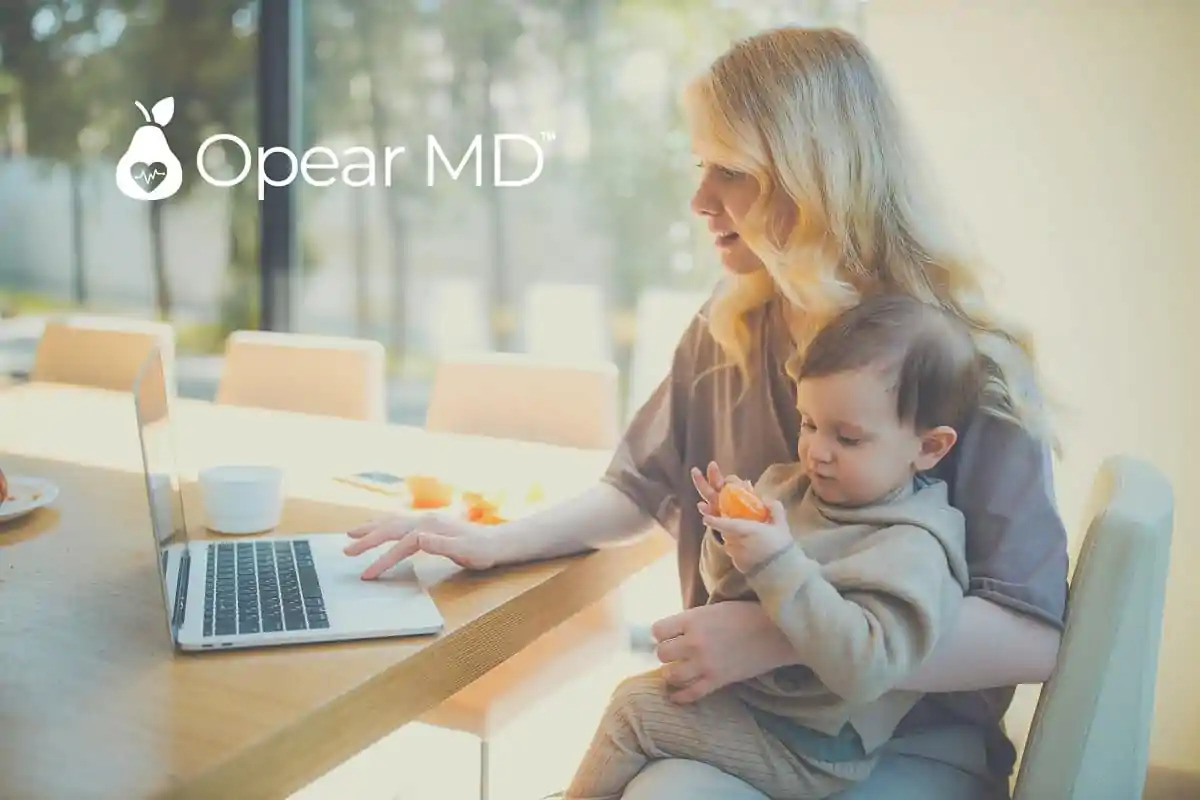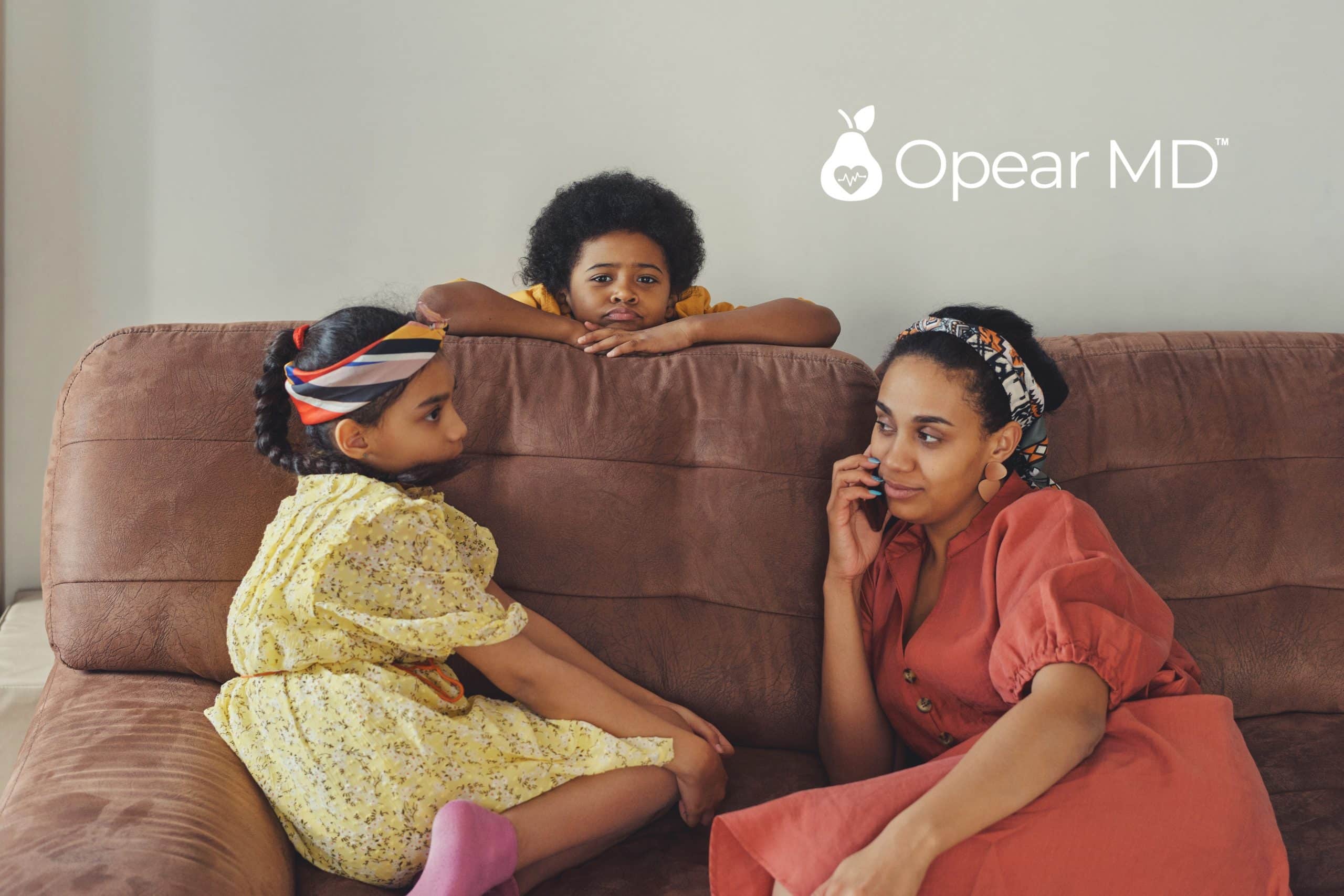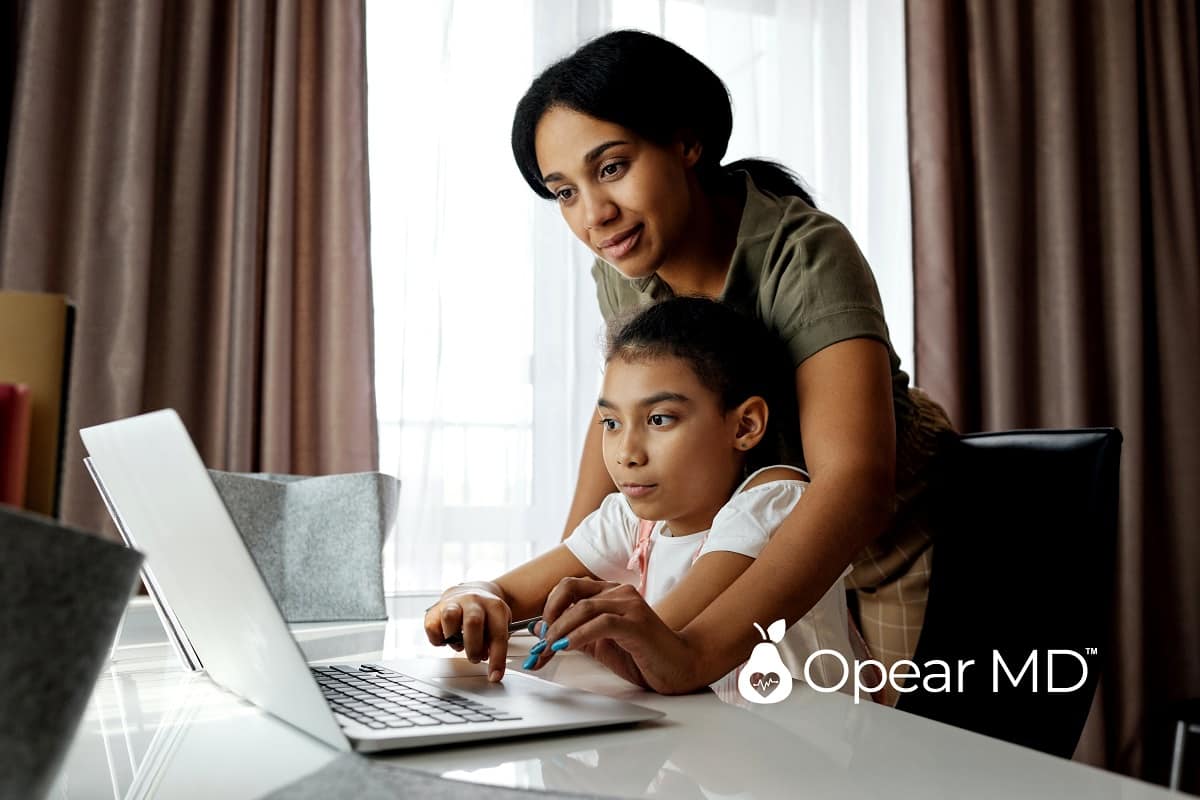
Telehealth for Infants
Virtual visits are a game changer for new parents
There was a staggering 2,532% rise in telehealth services this year—and many of the new converts are parents of infants. This should come as no surprise: Virtual visits have taken the anxiety and risk out of taking your baby to the doctor. By eliminating travel and reducing cost, telehealth can feel like a miracle for new parents.
Doctors can monitor newborns.
Parenting a newborn might be the most stressful job in the world—especially during those first few days and weeks. But with telehealth, doctors can continue to keep an eye on the baby immediately after birth. This is especially important for babies in the Neonatal Intensive Care Unit (NICU). Bringing a NICU baby home can be terrifying, but telemedicine provides the guidance and support parents need shortly after their baby is discharged.
Infants spend less time in a doctor’s office.
Infants have annoyingly frequent doctor’s appointments. There are those monthly well visits (to check vital signs and responsiveness), and because babies can’t say what hurts, new parents are often quick to get the doctor on the phone. Telehealth makes these recurrent doctor visits not only more convenient, but less risky by keeping babies safely at home and away from a germ-filled doctor’s office. Additionally, some telehealth services, such as Opear LLC, eliminate the waiting game altogether and will immediately connect you with the provider of your choice.
Babies are calmer during exams.
Virtual visits also allow the baby to remain in a familiar space, so he’s less likely to become agitated during an examination. We all know the piercing cry of an infant who doesn’t want to take her diaper off or is afraid of the stranger who just walked in the room—yeah, remember that appointment?
Doctors have immediate access to digital records.
Another benefit of telehealth is that it simultaneously provides access to the infant’s medical records—which at this young age is crucial. Doctors need to see notes on vaccinations, neonatal issues, and developmental signs when diagnosing a little one, and virtual visits keep all that information within view.
Specialists can bring their expertise to rural areas.
Telehealth also gives parents in rural areas access to neonatal specialists, when they might otherwise have to travel hundreds of miles to see one. Also, rural birthing facilities and community hospitals, which don’t have on-site neonatal care, can hook up with an expert via telehealth—instead of waiting for a transport team to arrive.
For example, Christopher E. Colby, M.D., chair of Neonatal Medicine at the Mayo Clinic in Rochester, Minnesota, was called to virtually consult on a preterm baby whose gestational age was unknown due to limited prenatal care. The local physician was unsure how to proceed, but Dr. Colby, after examining the baby via video, determined the baby was likely to be 28 weeks old and guided the doctor through his resuscitation and stabilization.
Finally, telemedicine makes everyone’s life easier.
Busy parents don’t have to miss work or hire a caregiver. They don’t have to time their appointment with public transportation or find parking in an urban area. They receive immediate answers to their often-frightening concerns about their young baby, quickly relieving them of the stress that so often accompanies caring for an infant.

Telehealth for Toddlers
Virtual medical appointments improve toddler health and well-being
Life with a toddler isn’t easy. They need constant attention and every little thing—from an untied shoe to a rejected snack—might inspire a tantrum. Taking a toddler to the doctor can be unnerving, but telehealth has recently come to the rescue—making medical visits less stressful and even more effective.
Toddlers are easier to examine.
There’s a reason why these ages are called the terrible twos and the frustrating fours. Toddlers, who are just starting to understand their own emotions, often become agitated or even hysterical—especially in a doctor’s presence. During a telehealth visit, with only their parents present, toddlers will be calmer, making it easier for the doctor to observe them, and potentially leading to a more informed diagnosis. (Home or online visits have also proven more effective in the care of kids with disabilities, especially Autism.)
Telehealth eliminates disruptions in daily routines.
Toddlers thrive on a clear and regular routine—and a trip to the doctor’s office can rattle them, even if a lollipop is the reward. That’s why telehealth is a lifesaver for kids this age—parents are more likely to seek care, and toddlers are diagnosed more quickly and accurately. This ease also inspires more frequent visits, which will keep kids healthier.
A virtual visit keeps everyone safe.
A doctor’s office can expose your toddler to some serious germs. Plus, toddlers touch everything, and then their faces—which means they will likely find germs on common surfaces and then, of course, bring these germs home to the rest of the family. This can all be avoided with a virtual call to Opear, which can quickly connect you with your doctor of choice.
Specialists are more accessible.
For families who live in rural areas where it’s challenging to get to a pediatrician’s office, Opear provides an almost immediate appointment. It also connects a family with the exact type of doctor they need for their toddler’s issues or ailments, even in areas where specialists are few and far between. And if the parents want to connect with their own doctor, that physician can easily sign up for free to be part of the Opear network.
In addition, telehealth can connect a specialist with a primary care provider, a social worker, the child’s school, and any other relevant providers to help synchronize a child’s care. The video technology also allows a doctor to document the visit, chart progress, and collect and track health indicators.
Finally, virtual visits via Opear take the tough out of toddler care.
Parents don’t have to take time away from work or hire a caregiver. Fewer family members are exposed to new bacteria and everyone’s mood is improved by the absence of transportation and excess cost. This relief can feel like a dream come true—especially when you’re raising a toddler.
OpearMD’s comprehensive guide to Telehealth offers ways to ensure that your whole family is not only safe and well-cared for by top notch medical professionals, but also provides expertise on convenient and cost-effective telemedicine for every stage of your child’s development.
Browse through the magazine version of the Telehealth guide
Telehealth for Teens
Teenagers respond better to online virtual care
It might seem ironic: We are constantly asking teens to put away their cell phones, and yet we want them to see a doctor online. But here’s the thing: Telehealth is not only more convenient and affordable than an in-person doctor’s visit, it’s more effective for treating teens.
Privacy promotes honesty.
At a doctor’s office, parents are almost always present in the exam room with their teenager, but a virtual visit with Opear gives teens the opportunity to conduct their appointment in the privacy of their own room, which means they will be more honest with the doctor. What sixteen-year-old wants to discuss her problems, especially embarrassing physical symptoms, in front of her mom? As a result, doctors can make a more accurate diagnosis and get the teenager the help that he/she really needs.
Teens can find the help they need.
Teenagers often find themselves straddling two worlds, and therefore misunderstood. A telehealth service, however, can connect a teen with the right doctor. For example, a teenage girl who wants to talk to a female doctor about body image issues can make this request via a telehealth service and is more likely to end up speaking with someone who can understand her problems and lead her in the right direction. If teens don’t have this opportunity, they may seek answers on sites like WebMD, which can lead them down a dangerous path.
Specialists are easier to find.
There is no one size fits all when it comes to teens. Because they mature at different speeds, some teens are suited to pediatric care while others have graduated into adult needs. Opear makes it possible for each patient to find the right doctor. Instead of blindly returning to their long-time pediatrician, teens can seek a specific kind of doctor. And many, especially in more rural areas, can see specialists that might not otherwise be available to them.
Teens are more likely to reach out.
Teens are pros at cellphone and video conferencing technologies—and this familiarity makes them more likely to reach out to a doctor via telehealth. Also the privacy advantage and the fact that they can more easily find appropriate support will make them more likely to reach out again. Studies show that patients who frequently seek medical advice tend to stay healthier and out of trouble.
Teens are notoriously difficult to please but telehealth has a shot at hitting all the right notes. It affords privacy, specialty, and independence (no rides needed), which will ultimately make it easier to figure out what’s wrong—or at least conquer one of the many issues plaguing your teenager.

Telehealth for Families
Gather the family for a virtual appointment
Telemedicine is now so popular that physicians are seeing 50 to 175 times the number of patients via telehealth than they did before the pandemic. Many of those converts are families who are finding it more convenient and cost-effective to get the whole clan on video rather than go one by one to the doctor. In fact, more families than ever before are making telehealth their new normal.
Schedules are easier to organize.
Planning a schedule with school, work, and after-school activities is challenging—every day presents new conflicts. How are you going take a work call if you have to carpool to baseball practice? Will you get home in time to make dinner? But a virtual call to Opear fits in with everyone’s routine. Doctors are available 24 hours a day, so parents can make an appointment for their child between school and ballet—and one for themselves at midnight.
Telehealth keeps everyone safely at home.
Another advantage of telehealth for families: A single call prevents the entire family from being exposed to the germs in a doctor’s office. No one is sitting next to an infected patient or reading a bacteria-laden magazine. Instead everyone is safe and contained within the home. (This also means that the family won’t infect others on public transportation or in a waiting room.)
A video call saves significant cost.
A single call which covers several members’ concerns at one time can save the family copays, as well as the cost and hassle of transportation. For families in rural areas, who might commute long distances to doctors, a telehealth visit with Opear can save them substantial money and time. Plus rural patients who may not have access to certain specialists can much more easily, and affordably, find them on a telehealth call.
Doctors can more accurately diagnose family members.
A virtual appointment allows the doctor to see and examine each person in the family—which could be advantageous if they are all navigating the same illness but presenting different symptoms. For example, if one daughter has a headache while her sister shows a rash, a doctor might diagnose both symptoms as part of the same illness.
Telehealth keeps families healthier.
Telehealth has also been shown to inspire more doctor visits—more folks are likely to seek advice via a virtual visit than a trip to a physical facility. With Opear, any doctor can sign up for free to be part of the network so families can even see their own physicians. When family members seek medical advice more frequently, they are more likely to identify symptoms before they escalate. They will also be contagious for fewer days. This can save the entire family from getting sick after one member comes down with an illness. Also if a virtual visit can diagnose one member of the family, the other members will be on alert if they have similar symptoms.
Finally, virtual doctor visits make medical care more convenient, as well as more effective, which in turn keeps families healthier. And in this challenging time of COVID-19, a healthy family and a reliable support system are essential.
 Opear MD is an app for on-demand house calls and telehealth appointments. With Opear, families have access to a network of certified medical professionals – including nights and weekends – without the frustration of waiting rooms or the risk of unnecessary exposure to germs. Think of Opear MD as an extension of your doctor’s office; whether you need an antibiotic prescription fast or a strep test without the risk of catching COVID-19, we bring a network of the country’s top doctors, nurse practitioners and physician assistants – to your fingertips.
Opear MD is an app for on-demand house calls and telehealth appointments. With Opear, families have access to a network of certified medical professionals – including nights and weekends – without the frustration of waiting rooms or the risk of unnecessary exposure to germs. Think of Opear MD as an extension of your doctor’s office; whether you need an antibiotic prescription fast or a strep test without the risk of catching COVID-19, we bring a network of the country’s top doctors, nurse practitioners and physician assistants – to your fingertips.




